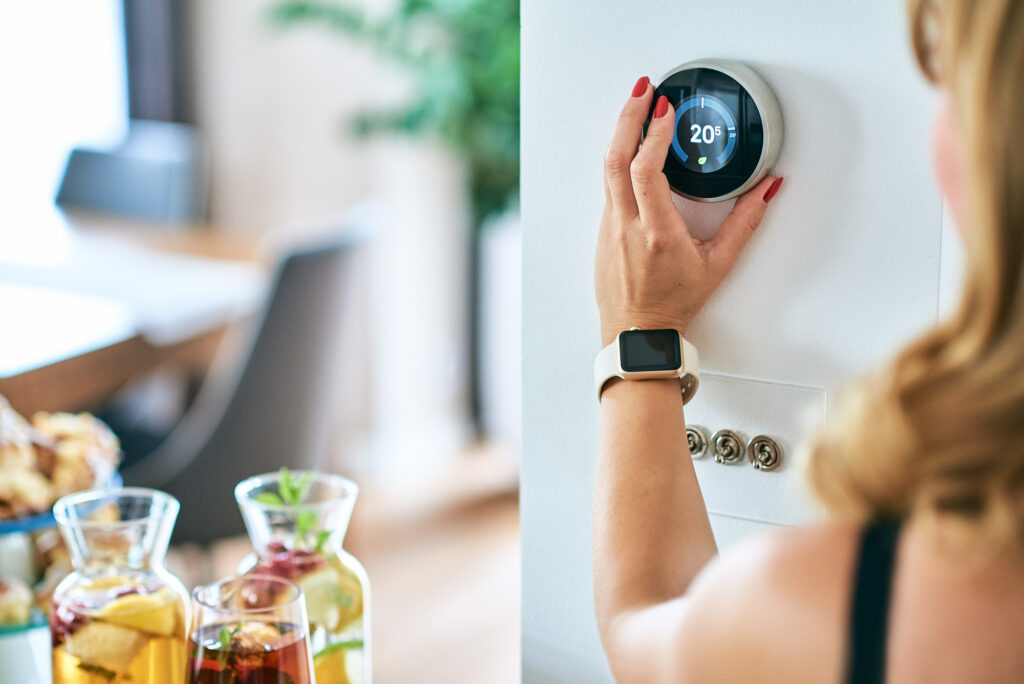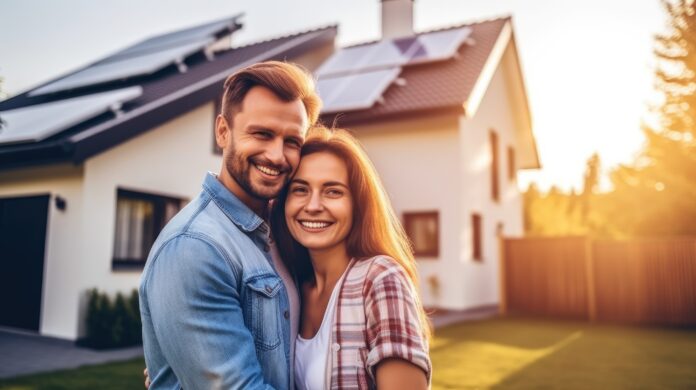Your home isn’t just a place of solace—it’s also a significant energy consumer. The heating system and lighting, among other factors, depend on energy consumption, impacting your carbon footprint and utility bills.
Here’s a reality check: applying mindful practices allows you to transition your abode from an energy consumer to a green home. This action benefits the environment and lends you a hand by reducing costs.
Do you find the idea of making your home greener daunting? Don’t fret! This guide uncovers practical steps toward achieving energy efficiency in your home. Dive in to embark on this green journey:
1. Insulate Your Home

Home insulation is one of the most effective ways to keep your house cool and energy-efficient. Proper insulation acts as a barrier, reducing the heat entering your home during the summer or escaping during the winter. Consider using insulation materials, such as natural fiber, polystyrene, or cellulose. The indirect benefit of insulation is that it forms a significant barrier against external noise, improving the overall comfort of your home.
2. Seal Off Air Leaks
If you’ve noticed draftiness around your windows or doors, it’s likely due to air leaks, which can lead to substantial energy loss.
In that case, sealing leaks allows you to save energy, hence minimizing your utility bills. Simple steps like weatherstripping your doors and windows or spray foam insulation for larger gaps can significantly reduce energy usage.
3. Change Your Light Bulbs
If you’re still using incandescent light bulbs, it’s time to consider a change. Compact Fluorescent Lights (CFLs) and Light Emitting Diodes (LEDs) are long-lasting and energy-saving alternatives.
Compared to an incandescent bulb, an LED bulb only uses a quarter of the energy and can last up to 25 times longer. While the initial investment may be higher, the lifetime savings on energy and cost make this switch beneficial.
If your light fixtures are unusually high on the ceiling, you might need help from a good electrician. This expert could safely aid the installation process and recommend the best energy-efficient light bulbs for your home.
4. Install Solar Panels
What better way to green your home than by harnessing the power of nature’s most abundant resource – the Sun? Solar panels convert sunlight into electricity to provide a sustainable energy alternative.
Although the initial investment is high, the federal incentives and long-term savings are tremendous. From a broader perspective, using solar energy minimizes reliance on fossil fuels and contributes to lower carbon emissions and environmental conservation.
5. Get An Energy Audit
An energy audit evaluates your home’s energy use and areas of wastage. This process might include an inspection of your insulation, HVAC system, and appliances. The energy efficiency checkup assists in pinpointing critical areas of improvement.
Audit benefits extend beyond cost savings; they lay the groundwork for an energy-efficient, comfortable home. And in the bigger picture, slight changes from a million homes could lead to a substantial decrease in energy usage and carbon emissions.
6. Upgrade Your Appliances To Energy-Efficient Models
Energy Star-certified appliances could improve efficiency while minimizing environmental impact. These energy-efficient models are refrigerators, washing machines, dryers, dishwashers, and air conditioners.
When buying new appliances, pay close attention to the energy rating label on the latest products. More stars indicate greater efficiency and lower running costs. Investing in these appliances may require an initial higher expense, but the subsequent long-term energy and financial savings make them a wise choice.
7. Invest In A Rainwater Collection System
Moving to the precious resource of water, how are you managing it at home? A rainwater collection system could be essential to your green home strategy. This system is a natural way to gather, store, and reuse rainwater for household or garden-related chores.
Installing a rainwater collection system is a substantial investment, but it’ll reveal its value over time. Investing in such a system consumes less water, mitigating surface runoff and decreasing water bills.
8. Adopt Sustainable Habits
While greener gadgets and energy audits make a difference, incorporating energy-saving habits in your routines is just as vital. Some simple actions include unplugging electronics when not in use and turning off lights when not needed.
These habits don’t require investment, resulting in lower energy costs and reduced greenhouse gas emissions. Remember, the power to influence the environment lies in your hands and your daily habits.
Wrapping It Up
And there you have it—the eight ways to make your home greener and more energy-efficient. You might be able to cut your energy usage through these eco-friendly actions. Aside from that, you could minimize your carbon footprint and save money on utilities.
So, consider any of these steps for a more sustainable home. No matter how small the change may seem, every bit contributes to a healthier planet for future generations. Have fun embracing eco-conscious living!








